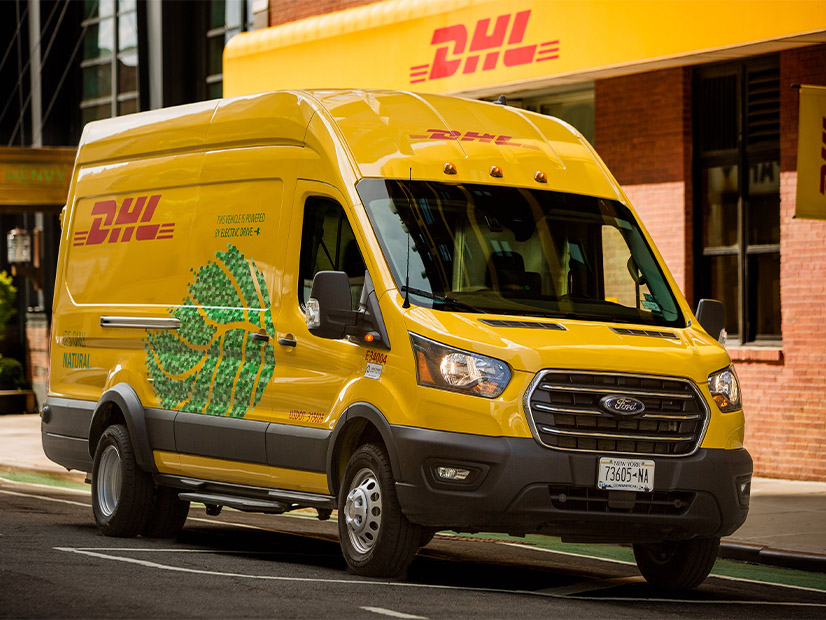
The North American Council for Freight Efficiency (NACFE) makes the case in a report released this week that electric versions of vans and step vans used by delivery companies and small businesses are not only competitive with gasoline and diesel vehicles but are “a perfect fit” for the market segment.
The conclusion is based on data collected from three battery electric vans and step vans operated last fall by companies participating in real-world testing of the vehicles, as well as interviews with their staffs of participating, including the vehicles’ drivers and maintenance crews. Members of the NACFE team also interviewed vehicle manufacturers.
The number of small commercial vehicles is expected to grow. NACFE estimates that there are about 4.2 million vans and step vans used commercially in the U.S. and Canada. Many of the vans are involved in deliveries of products purchased through e-commerce sales, which amounted to $218.5 billion in 2021.
Citing statistics from the Bureau of Transportation, NACFE noted that the tonnage delivered in the top 50 delivery routes is expected to increase from 2.4 million tons in 2022 to 3 million tons in 2030.
Data collection from the vehicles participating in the real-world testing was done electronically and appears to have been rigorous.
“All three vehicles were instrumented with a Geotab telematics device. The vehicle operations were continuously digitally tracked, and their metrics updated daily via a public website with the ability to view results by day or over a span of days. Metrics such as daily range, speed profiles, state of charge, charging events, amount of regenerative braking energy recovery and number of deliveries were shown in near real time. Information on weather conditions also was observed,” the report said.
Drivers were enthusiastic about their experience, the report states, because of the ease of operation and the considerably less noise and vibration that left them less fatigued at the end of a shift.
Interviews with maintenance crews found them to be positive, with far less to do, as the engines, transmissions and related emission controls had been replaced with an electric drive and battery pack.
The vehicle battery packs were designed to be charged at 240 V overnight, meaning even a fleet would not pose an extra heavy load on utilities.
Despite the positive results, the report points out that there will be challenges as the delivery industry switches over as predicted, gradually replacing their existing vehicles with electrics in pilot programs.
Total cost of ownership is one way fleet managers approach the problem, the report said.
“Fleets utilizing vans and step vans, especially in the parcel and package delivery space, currently expect the equipment to last 15 to 20 years and accumulate 300,000 to 400,000 miles in that time span.
“Although manufacturers believe battery life can meet design lives of five, seven and 10 years depending on the OEM choices, long-term performance of electrified vehicles in this market segment still needs to be validated by fleets,” the report cautions.
On the plus side, maintenance costs are expected to be considerably less than with conventional engines and transmissions that required steady preventive maintenance. One performance aspect on the side of the electrics is the cost of fuel.
A NACFE analysis based on the price of gasoline at $2.98/gallon and the delivered cost of electricity at the national average rate of 11.2 cents/kWh and 250 days of operation delivered an estimated annual fuel cost for the gasoline-fueled vehicle at $10,065 and $1,958 for the electric version.
“We expect that this work [the real-world testing] will encourage fleets to explore the deployment of commercial battery electric vehicles (CBEVs) in their operations where they make sense, for manufacturers to improve their products for quicker return on investment and for others to better support the efforts of the trucking industry to progress the use of CBEVs,” the report explained.
“NACFE considers this market segment to be 100% electrifiable,” the report concludes, “which would result in the avoidance of nearly 43.5 MT CO2e annually.”
“As recently as five years ago, I would have questioned the feasibility of electrifying North American van and step van fleets,” said Mike Roeth, NACFE executive director. “The transition to cost parity happened quicker than most of us expected, and I am surprised to announce today that the electric market has arrived.”

